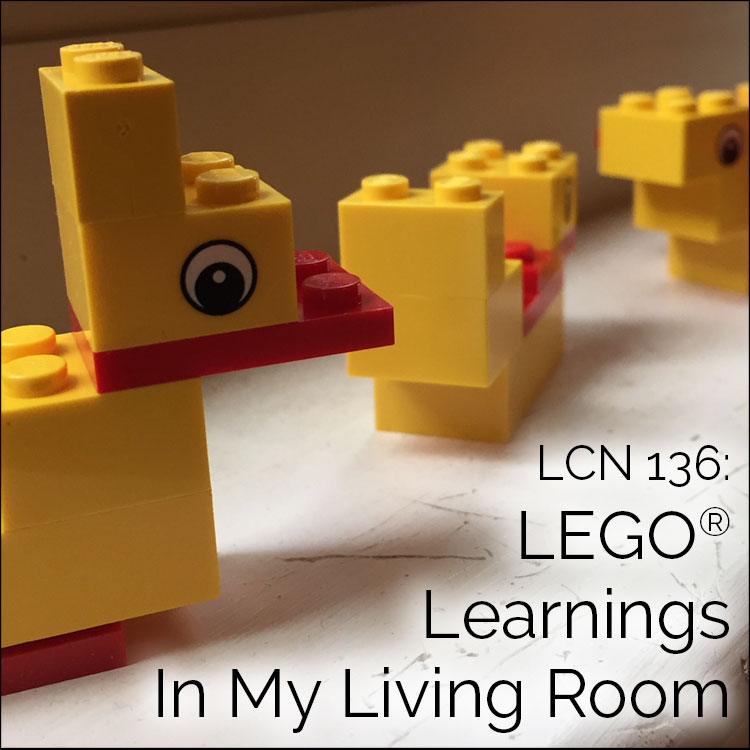
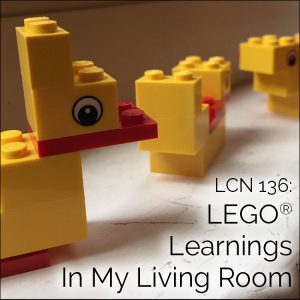 One of my not-so-secret weapons is a powerhouse online business community called CoCommercial, which I honestly don’t think I could live without at this point.
One of my not-so-secret weapons is a powerhouse online business community called CoCommercial, which I honestly don’t think I could live without at this point.
It was started by Tara Gentile, and it’s gone through multiple iterations, and at this point, it’s really hit its stride. We have yet to see how it handles growth, but right now, as a member of the Leadership Circle, I feel like I’ve struck gold.
Anyway, the real value in CoCommercial is the community — the resource there is amazing — and Tara Gentile is kind of a small business genius. And one of the many gems I’ve gotten from Tara over the years is what she calls the Living Room Strategy.
In a nutshell, the idea behind the Living Room Strategy is to hand-invite a select group of past customers or clients to a minimum viable experience in order to get you “from idea to income” quickly.
The idea is:
- To get you to develop an offer based on actual individual needs, to ensure that you’re creating something that people really want.
- To help you craft a sales message designed for who you want in your program/using your product so you know it resonates.
- To help you do the least amount possible to create a great experience based on who you’re serving.
- To help you make money now.
Just the other weekend I put a modified version of the Living Room Strategy to use to run a LEGO® SERIOUS PLAY® (LSP) team building workshop for 5 people in my actual living room, and I thought I’d share what I learned from the experience.
My goals were different from Tara’s Living Room Strategy goals, though. They were:
- To get experience putting some training I’d recently completed into practice.
- To get feedback.
- To gain confidence.
- To get me one step closer to my Big Dream of building my consultancy (which now has its own website: creativesandbox.solutions!)
Background
I recently completed 40 hours of advanced training and certification in LEGO® SERIOUS PLAY® methods and materials, and my Master Trainer advised us to host a workshop immediately upon returning home, even if that meant bribing friends and family with cookies!
LEGO® SERIOUS PLAY® is an experiential methodology that is very hard to fully communicate in words. People need to experience it to really appreciate the immense transformative power and value of this kind of workshop.
As a new facilitator/consultant, this poses some challenges:
- It’s hard to get people to hire you without social proof from previous workshops.
- You don’t get the chance to practice, or get social proof, if nobody hires you (see #1 above!)
So I developed the following game plan:
1. Run a practice workshop for friends and family, to get comfortable with the mechanics and timing of leading the workshop in a super-low-stakes setting; get feedback; and grow my confidence.
2. Book and run a handful (target: 5) of pro bono or low-priced workshops for non-profits in exchange for feedback, testimonials, case studies, referrals, photography/video.
3. Armed with confidence, feedback, social proof, testimonials, etc. from #1 and #2, start going after “bigger game” clients!
This case study focuses on #1 above.
In a Living Room Strategy, the idea is to pilot a program for the actual clients you would be running your ultimate program for, but in a really low-stakes manner.
The program doesn’t necessarily have to be fully built out — your clients can help you build it! That’s the purpose of the Living Room Strategy!
In my case, I already have a road map/curriculum, including a slide deck that came as part of my training. What I was interested in, mostly, was getting used to the mechanics of facilitating it, and how it all fit together.
My Clients
My potential clients are threefold:
- First, there’s the client who hires me, who is likely to be a team lead, head of marketing, or someone in HR at an organization.
- Then there’s the CEO or department head who actually writes (or approves writing of) the check that pays me.
- Then there’s the participant in the workshop, who could be the member of an executive team, or a board member, or any staff member, or really any employee of an organization.
My practice workshop attendees were 4 friends from my improv community, plus my husband — essentially #3 above. I most likely won’t be selling directly to that group, but I could end up with anyone in a workshop, so it was perfectly appropriate to have a group of “random friends” in my practice workshop.
Getting Butts in Seats
I came home from my LSP training on October 21st, and on October 27th I sent an email to 25 local friends and family members whom I thought would be open and interested in doing the workshop.
Here’s what I wrote:
SUBJECT: Want to play with LEGO® with me?
Dear friends and family,
Yes, I’m serious. I’m looking for a few people to come play with LEGO® with me for a very specific purpose.
Here’s the story:
Last week I was in Whistler, BC, getting trained and certified in a methodology called LEGO® SERIOUS PLAY® (or LSP for short).
I first encountered LSP at a conference last June, and was so blown away by the power of this methodology, that I knew I had to get advanced training so I could facilitate it.
LEGO® SERIOUS PLAY® is like nothing I’ve ever experienced. It is a method and process to enhance innovation and performance that uses LEGO® bricks to enable people to “think with their hands,” solve problems, explore ideas, and achieve objectives. It allows teams to understand each other’s interpretations and create deeper shared meaning of key ideas.
In LEGO® SERIOUS PLAY®, everyone builds, and everyone shares, resulting in more democratic meetings and a level playing field with equal “air time” for all participants.
LEGO® SERIOUS PLAY® works best for any kind of sticky question, problem, or situation where there is no obvious answer, including:
- Team Building / Team Alignment
- Goal Setting
- Idea Generation / Innovation of Products & Services
- Identifying Values & Behaviors
- Clarifying the Current Situation
- Creating a Shared Vision
- Organizational Strategy
(It’s AMAZING for strategy—my favorite part of my training was using it to stress-test different scenarios in order to “bullet proof” an organization.)
Here’s Where You Come In
As a newly certified facilitator of this method, I want to get some practice in a zero-stakes environment before running a workshop for a paying client, and I need participants to run a 4-hour LEGO® SERIOUS PLAY® workshop in my living room.
What’s In It For You
- You’ll get to spend 4 hours with me 🙂
- You’ll have a blast!
- You’ll get to experience an amazing methodology you may want to bring to your work/life
- I’ll feed you well (I’ll provide lots of yummy snacks)
- You’ll have all the coffee and tea you desire
- You’ll have my eternal gratitude 🙂
Sound Fun? Are You In?
Great! Fill out this Doodle poll to let me know your availability: [LINK]
(And if you have any friends you think might be interested, great! Invite them to fill out the Doodle poll, too — I just need names, emails, and phone numbers so I can contact them.)
I only have room for 6 people max. But even 2 people will be invaluable, and enough for me to run a workshop.
Any questions? Reply and I’ll be happy to answer them!
Thanks so much!
xo,
Melissa
If I had been a “Living Room Strategy Purist,” I would have reached out to individuals personally, but I wanted to get the message sent out quickly, so much as I hated to send a mass email, that’s what I did, BCCing everyone on my list directly from my Gmail account.
Honestly, I didn’t know if anyone would respond. 4 hours on a Saturday is a big ask, after all!
But within the hour I had my first Doodle poll respondent! I had one “yes,” and two possible dates.
Technical Glitch: Doodle Poll
Also within the hour, I had my first email from someone else, trying to respond to the Doodle poll… but unable to, because something weird was going on for them with Doodle.
That turned out to not be an isolated incident. Someone else had trouble with the Doodle poll.
For those of us who rely on technology, this is a lesson that I seem to have to keep learning over and over: just because the tech works for me doesn’t mean it works for everyone else!
In the end, I had to abandon the Doodle poll altogether, and turn to email and texting to figure out the final date and time.
Since my workshop had a maximum of 6 attendees, this was only a minor pain, not a total disaster.
LESSON: Next time, have an alternative schedule polling system in place!
Ducks in a Row
Before long I had a date — November 11 — and after a lot of back and forth with the 4 friends who’d RSVP’d (plus my husband, who was #5), we had a time — 10am to 2pm.
Now I had to get all my ducks in a row: prep the content, prep the music playlist in Spotify, prepare the space, make sure I had snacks and drinks, PowerPoint ready to go, flip charts ready to go, get all the LEGO® ready to go…
Basically, I had a to-do list a mile long!
And working out the kinks in that to-do list is exactly why I was running this practice workshop! 🙂
Best Laid Plans…
On the day of, I had just gotten everything set to go when one of my attendees texted that she was stuck in terrible traffic and would be 15 minutes late.
Then another one texted that her babysitter was late.
This is where it pays to be in an improvisor. I had a road map printed out, but I know from hard won experience not to expect to cleave to a pre-set agenda!
My late attendees each urged me to start without them, but this kind of team building workshop is not the kind of thing that works with one or two people coming in late, especially when the entire group is only five people!
Thankfully, I had a metaphorical toolkit of activities to pull from, so we did a couple of unplanned activities while we waited.
And because I had my road map printed, with the projected start and end times for each section, I was able to adjust over the course of the day, pulling out one of the activities entirely, and ending completely on time, even though we started 45 minutes late!
Bonus: Unexpected Photography!
Wednesday and Thursday the week before the workshop I was in San Francisco at Tara Gentile’s CreativeLive class, Create a Hiring Plan and Grow Your Standout Business, which made prepping for the workshop tight, but led to an amazing bonus when Shelly Waldman (an amazing professional photographer as well as a business strategist I know from CoCommercial) was able to drop by and take some shots with her madskilz!
And yes, I got photo releases (except from one person, who was fine with photos “as long as they don’t show my face,”) so I’ll get to use the pics on my website! Major win! Can’t wait to see them — I’ll share some here when I get them. (The photos here are from my iPhone.)
Outcome & Learnings
For my participants, the outcome was that they had a total blast!
They took 4 hours out of their Saturday, largely out of a desire to help me out, combined with curiosity, and they thanked me afterwards.
One woman said she was surprised by how much insight she got into herself.
The biggest outcome for me of running a practice workshop is a huge lessening of anxiety, and increase in confidence.
Before I’ve gone through the paces on a new thing, I can be a bundle of nerves. But once I’ve actually done it, it calms me right down, and boosts my confidence like nothing else.
For that alone, the practice workshop was invaluable.
I also learned a ton that there’s no way I could have figured out just through thinking.
For example:
• Clarify Materials Expectations
One section of the workshop, for about an hour, everyone builds their identity on the team. There are 5 “builds,” each a few minutes long, when they build a piece of their identity and snap that onto a 5″x5″ base plate.

Later, those “identities” get placed onto the “landscape” of the table, so it’s important that they’re easily moved about, and are not a jumble of separate small pieces.
The workshop made me realize that it would be helpful to make it clear at the start that everything they build during this portion needs to snap onto the base plate, and to leave room for 5 builds.
• Clarify Time Expectations
Attendees shared that it was helpful for them to know exactly how much time they had for each build: 2 minutes? 3 minutes? 3 1/2 minutes? That’s easy enough for me to state up front, and was useful for me to hear from them!
• Assess Experience Levels
One of my attendees had never put LEGO® together before! She struggled with the technical aspect of getting the bricks to snap together. That was illuminating!
I’ve come up with a fun way to get a group to self-assess according to LEGO® assembly experience, and then if there are any LEGO® newbies in the room, to solicit willing helpers to sit near them to lend a hand.
• Think About LEGO® Distraction Effect
The two guys in the group said as soon as the LEGO® was poured on the table, they had a hard time concentrating and just wanted to build! Consider having a few bricks out for people to play with at the start, during the few minutes of introduction. (FYI, “doodling” — whether with a pen or in 3D with LEGO® bricks — has actually been shown to help with information retention.)
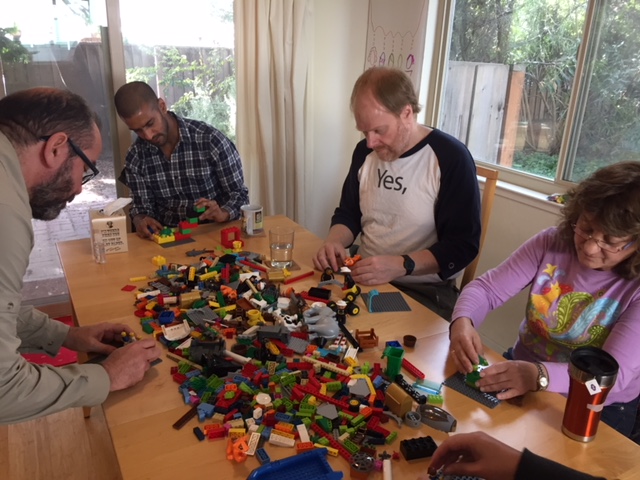
• Redesign Slides
One of my top values is Beauty/Aesthetics, and yet I used the slide deck that I came home from my training with, which desperately needs an injection of good design! Oy…. How embarrassing….
But not to worry. This was a practice workshop, after all. 🙂
• Don’t Apologize!
Yes, I started off my workshop by thanking everyone for coming… and then by sort of apologizing for the fact that the day might be a bit messy. As one of my friends pointed out afterwards, this was only strengthening my “apology muscle.”
She’s right. Don’t apologize beforehand. Even to a group of friends.
• DO Apologize… And Fix It!
On the other hand, I blew it with an activity when I gave everyone someone else’s name — sort of like a “secret Santa” game — but one person got left out. So someone got TWO gifts, and one person got zero. Oops…
I apologized (it was a friend, and he wasn’t upset, but still). And I need to figure out how NOT to repeat that same mistake next time! 😛
• Reinforce that It’s Not a Competition
Because the activities are timed, and probably because we live in a competitive culture, it’s easy for people to fall into feeling like the builds are competitions. Who finishes first, or who builds biggest, or whatever. Especially for people who might feel less skilled with LEGO® (like the person in my workshop who had never snapped bricks together before).
Observing how competitive people in a group tend to be can be interesting for assessment purposes, but the point of my LSP workshops is to bring groups together — even if the ultimate outcome is strategy, we always start with team building first — so reinforcing that it’s not a competition is super important!
Follow-Up
A couple of things I didn’t do at the workshop itself:
- Ask for testimonials.
- Ask for referrals.
I think I was so wiped out from all the anxiety and prep, and afraid to ask too much of my participants.
So I emailed them individually afterwards to make these requests.
This is an entirely new business model for me, this in-person revenue engine, which I expect to be largely based on referrals, once it gets going. I’m figuring it out as I go along!
Part 1 of my game plan is complete (with follow-up still to do); part 2 is in motion.
And yes, Living Room Strategy in an actual living room actually works! 🙂
Onward, ho!
I hope this is helpful.
Something Cool
This week’s Something Cool is Dean Stair Treads. Specifically, non-slip, tape-free, pet friendly, stair gripper, natural fiber, sisal carpet stair treads in Island Sand with black binding, plus a matching 2′ x 3′ landing mat.
After having our floors and stairs redone with bamboo, we were super nervous about slipping down our newly slippery stairs. I looked into getting a runner, but when I discovered these stair treads, and read the reviews, we decided to give them a try. Anything that doesn’t slip, but is easily removed for cleaning, sounded like the way to go to me.
We love them! And our kitty, Nika, loves them, too. Check ’em out.
Enjoy!
Listeners Wanted!
Has the Live Creative Now podcast made a difference in your life? Would you like to be featured on the podcast?
I want to start sharing listener stories, so if you have a story of how listening to the podcast has changed your life for the better in some way — big or small — I want to feature you in a Listener Spotlight.
Here’s how it works:
1. Just log into iTunes and leave a rating and review. (If you don’t know how to do that, you’ll find step-by-step instructions at livecreativenow.com/itunes-review).
2. Then copy and paste what you wrote in your review into an email, and send it to me, along with why you want to be featured in a Listener Spotlight. How has Live Creative Now made a difference in your life? You can email me at livecreativenow.com/contact.
That’s it!
If I pick you for a Listener Spotlight, we’ll have a relaxed, fun conversation, and the recording of our conversation will be part of a future episode! How cool is that?
Want a creative kick start?
Check out my book!
What would change for you if you could totally revel in the joy of creating? You CAN, with The Creative Sandbox Way!
You’ll learn:
- Melissa’s 10 fool-proof guideposts that have helped thousands get joyfully creating.
- 5 reasons why creative play is good for you, AND for the world (it’s neuroscience, baby!)
- Why “I’m not creative” is always a lie, and how to bust it.
- How to turn creative blocks into friends.
AND you’ll get creating right in the book itself.
 “It’s one part field guide, one part creative practice—and I loved it. The Creative Sandbox Way is an adventure packaged as a book.”
“It’s one part field guide, one part creative practice—and I loved it. The Creative Sandbox Way is an adventure packaged as a book.”
~Chris Guillebeau
NYT best-selling author of The Happiness of Pursuit and The $100 Startup
Hear ye, hear ye! This is to serve as official notice that all links to anything for sale, be it books or courses, are likely to be affiliate links. What this means is that if you click through said links and make a purchase, although it won’t affect the price that you pay, a few coins will jangle into my coffers, enabling me to buy a packet of hard gluten-free biscuits to feed myself and my husband for another day, or perhaps a pen with which to create some artwork. Or perhaps they will contribute toward paying a fraction of my web hosting bill, so that this blog and podcast can continue to exist. Thank you kindly for your attention.
Thanks for Listening!
Thanks so much for joining me this week. Have some feedback you’d like to share? Leave a note in the comment section below!
If you enjoyed this episode, please share it using the social media buttons you see at the bottom of the post.
Also, please leave an honest review for Live Creative Now on Tunes!
If you’d also like your voice to be heard on the show, leave your question as a voice message right here.
And finally, don’t forget to subscribe to the show on iTunes to get automatic updates.
Subscribe in iTunes | Subscribe via Stitcher
Now go get creating!

PS — Pssst! Know someone who might benefit from seeing this today? Pass it on!

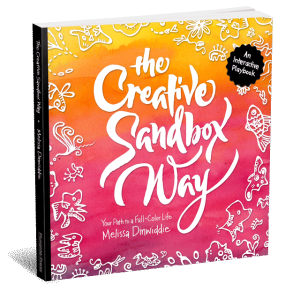

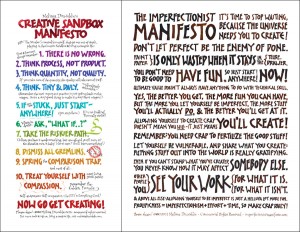 10 Tips to Bust a Creative Block: Download Your FREE Poster!
10 Tips to Bust a Creative Block: Download Your FREE Poster!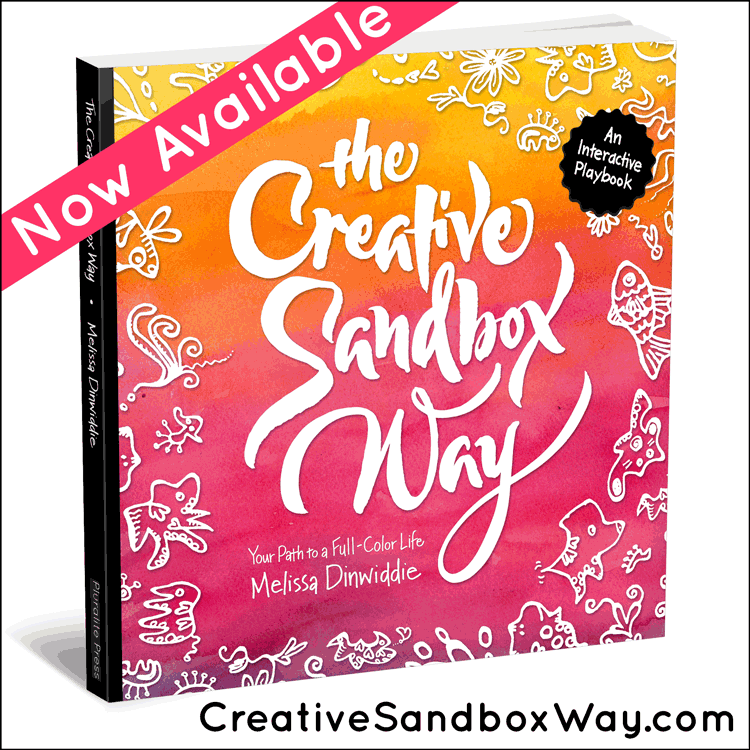
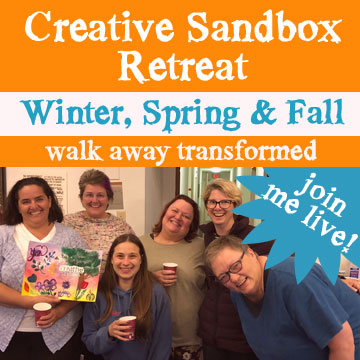
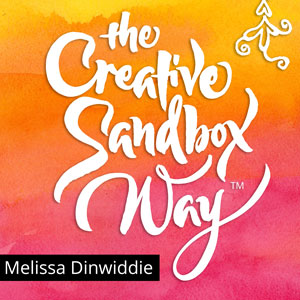

Leave a Reply